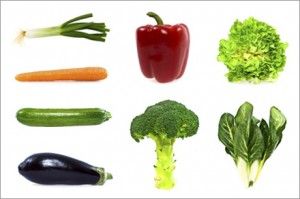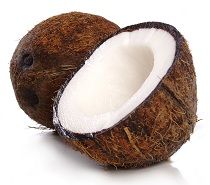Comment: This is the third article in an ongoing series called 9 Steps To Perfect Health. Make sure to check out the other articles:
* 9 Steps to Perfect Health: Introduction
* 9 Steps to Perfect Health: #1: Don't Eat Toxins
In step #1, we talked about what not to eat. In this article, we'll talk about what to eat.
Most of the calories we get from food come from protein, carbohydrates and fat. These are referred to as macronutrients. We also get other important nutrients from food, such as vitamins and minerals. These don't constitute a significant source of calories, so they're called micronutrients.
For the last 50 years we've been told to follow a diet low in this or that macronutrient. From the 1950s up until the present day the American Heart Association and other similarly misguided and pharmaceutically-financed "consumer organizations" have advocated a low-fat diet. More recently, low-carbohydrate diets are all the rage.
Not all macronutrients are created equal
The problem with these approaches is that they ignore the fact that not all macronutrients are created equal. There's a tremendous variation in how different fats and carbohydrates affect the body, and thus in their suitability for human consumption. Grouping them all together in a single category is shortsighted - to say the least.
What many advocates of low-fat or low-carbohydrate diets conveniently ignore is that there are entire groups of people around the world, both past and present, that defy their ideas of what constitutes a healthy diet.
For example, the low-fat crowd will tell you that eating too much fat - especially of the saturated variety - will make you fat and give you a heart attack. Tell that to the traditional Inuit, who get about 90% of calories from fat, and were almost entirely free of obesity and modern degenerative disease. The same is true for the Masai tribe in Africa, who get about 60-70% of calories from fat (almost entirely from meat, milk or blood.) And then there's the modern French, who have the lowest rate of heart disease of any industrialized country in the world - despite the highest intake of saturated fat.
The low-carb crowd is very much aware of these statistics, which are often used in defense of low-carb diets as the best choice. Tell that to the Kitavans in Melanesia, who get about 70% of calories from carbohydrate and, like the Inuit and Masai, are almost entirely free of obesity, heart disease and other chronic, degenerative diseases that are so common in industrialized societies. We see a similar absence of modern diseases in the Kuna indians in Panama and the Okinawans of Japan, two other healthy indigenous populations that get about 65% of calories from carbohydrate.
These rather inconvenient exceptions to the low-fat and low-carb dogma vigorously promoted by advocates of both approaches show us that humans can in fact thrive on a wide range of macronutrient ratios, ranging from extremely high fat (Inuit, Masai) to very high carb (Kitavans, Kuna & Okinawans). They also hint at the idea that perhaps not all carbohydrates are the same in terms of their effects on human health.













Comment: To learn more about the health benefits of saturated fat read the following articles:
Saturated Fat is Good for You
7 Reasons to Eat More Saturated Fat
Higher saturated fat intakes found to be associated with a reduced risk of dying from cardiovascular disease
Boosting 'good' fat to burn off the bad
A Healthful Diet? Don't Forget the Fat